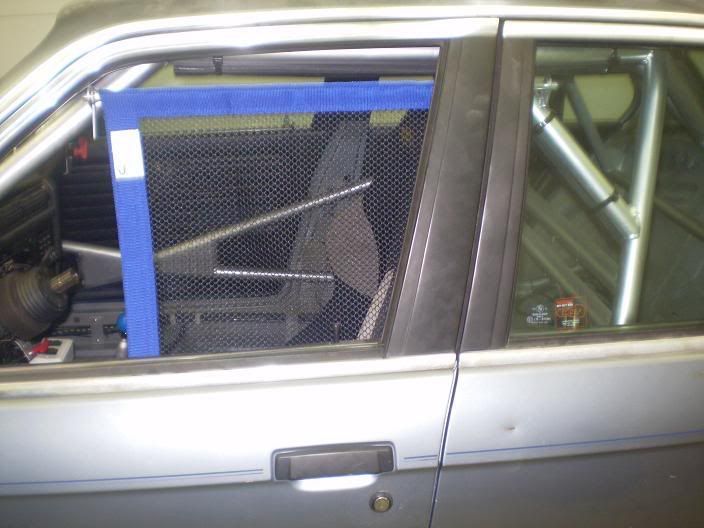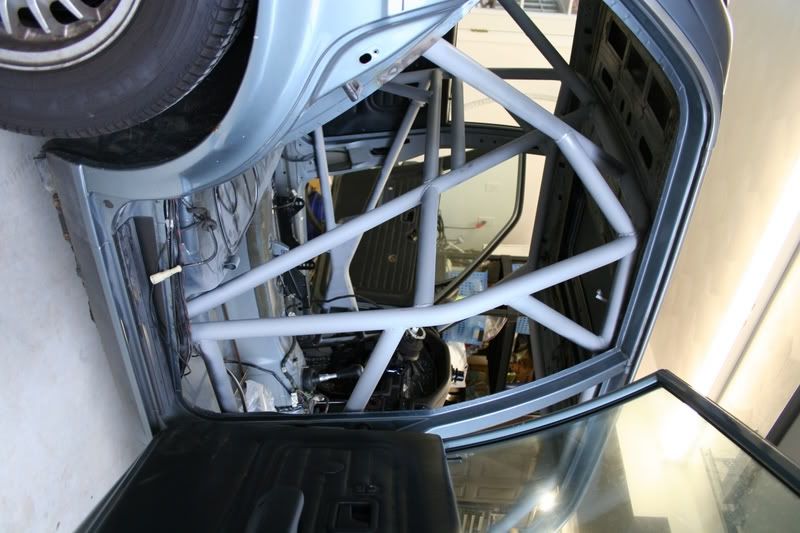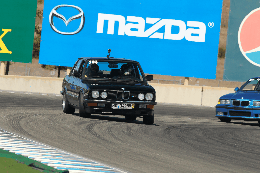TRM Bolt-in Roll Bar pictures
Collapse
X
-
As I mentioned in both of other posts, punching through is not the issue. The issue is relative movement between the bar connections and the chassis. Two metals welded together will always be stronger than 2 metals bolted together (assuming quality connections in both cases). We should all understand this from simple mechanics.
Cheers.Comment
-
An interesting point and one that deserves addressing. As you are aware I'm sure, the improvement offered by a roll car/cage is directly related to how good the chassis is to begin with. In the BMW world comparing an E30 to an E46 for example. The E30 requires significantly more cage to approach the stiffness achieved in an E46 with a much less extensive cage. Newer design, significant improvements in chassis design in the last 10 years, trust me. I'm gonna take a wild guess and say that the F1 chassis is probably pretty good to begin with. But of course if welding is not an option then it's moot. ; )
Absolutely. This is precisly the reason I generaly deem bolt in cages unsafe. Given that the signficant majority of bolt in cages I've seen are not well done (both construction and installation) it's far more likely that any given bolt in cage falls into this category rather than good.I would say that bolt in cages are not unsafe just because they bolt in, they are unsafe because (in general) they are poorly designed and constructed.
Well, I understand your point but I would never weld together a bolted cage. Bottom line is installation absolutely matters in both cases and it's possible to get a bolted in cage done very well such that it's better than a crappy welded in cage. My point is that given at least nearly equal installation quality, generally, welded is much better.Take the two extremes: Would you rather have a crappy fitting bolt in cage welded into your car (with all the bolt in tubes welded also), or would you rather have a custom, excellent fitting, no-bolted-together tubes cage installed, but with each base plate only bolted to the unibody? Luckily, nobody has to make that choice, but I know which I would go for.
Once again, I agree. One can polish a turd but it's still a turd. ; )Crap is crap whether it bolts in or is welded. Crap designs can also be installed with incredible craftsmanship, but that's a whole different issue.Comment
-
I don't see bolting as a "horrible" option in any case as long as its done well. Many structural components are bolted together on a car. Properly engineered fastening systems will make a connection that can be as strong as a single tube welded to a single plate.
Bolts on multiple planes can simplify the "forces from where?" problems, but that is usually not necessary.
There are cases (like the McLaren F1) where a welded cage is obviously not going to happen. This is also true with anything with an aluminum chassis.
The usual method on a composite chassis or an aluminum chassis is with a bolted plate. In the case of the Ferrari race cars, a thick aluminum plate can be welded to the chasis, and the base plate of the "cage" bolted to that. In the case of LMP cars, the rules often require a steel main hoop. That is difficult to weld to aluminum honeycomb or carbon fiber. In both cases, a plate is bonded into the structure and the main hoop is bolted to it.
As a set of rather extreme examples; in heavy impacts how often do we see the front subframe detach from the vehicle, or the gearbox detach from the engine, and those failures happen at the fastener? I've seen blocks break and gearboxes break, but not the gearbox to engine interface. I've seen subframes and frame rails torn in half, but still bolted to each other.
On the harness front, whenever possible, you want to decelerate the occupant over the longest time possible. In general, this means belt stretch (and belts don't really stretch much), and so that means use the longest belts possible. Most engineering based sanctioning bodies are very specific on this front. For example, the FIA does not condone harness bars in the main hoop (or any bar in the main hoop) and suggests that the upper harness attachment points be at the C pillar. If necessary, a harness bar can be installed on the downtubes... but again, not in the main hoop. They want the belts long...Comment
-
I understand the bolting examples you guys are providing but this is not directly comparable to bolting in a street car, it's not the same at all and it certainly does not mean that bolting in one case is equally as good as bolting in another.
Your bolted part failure examples are not cases where one part is significantly stronger than another...an engine/gearbox interface is very close to equal strength parts on both sides, that's not the same as plate steel with a tube welded to it attached to sheet metal.
To be clear, I'm not saying that bolting is absolutely unsafe in all cases. I'm saying that in many of the cases I see it is not good at all. Personally I would not do it, my tolerance is different than many in this case. But I don't think it's unsafe if done properly, only that a lot of what I've seen is often not done properly. Other than proper engineering test proof, I'll never believe that bolting is as good as welding. If people want to do it that's fine. I would just urge them to do it properly. ; )
Oh, and aside from the safety point, welding is still better from a structural point. I'd be willing to bet if any of those examples sited above could weld, they would. ; )
Cheers.Comment
-
The another difference between a bolted and a welded cage is that while the welded cage may have plates on the floor, it also has plates welded to the rockers, usually gussetted to the cage. So, it has the advantage of using the stiffness of the rocker. While all the bolted cage I have seen only have double plates thru the floorpan. Nothing linking the roll hoop or the front part of the cage to the structural elements of the car.Brake harder. Go faster. No shit.
massivebrakes.com
http://www.facebook.com/pages/Massiv...78417442267056
Comment
-
That's the problem right there. Most bolt-in cages mount only to the floor. A good weld-in cage does not.Can those of you that know the difference explain to me why the welded bar is so much better? Mine has fairly large plates and opposing plates on the opposite side of the metal with the 4 bolts going through the plate, the floor, then the other plate. To me for this to fail in a roll over it would need to tear out as much or more floor than if the plate was welded in. I could understand if it was just bolts in the floor without the opposing plates, are most bolt-in bars made that way?
A weld-in cage generally has the "feet" of the main hoop boxed in to the cross-member and side sill. Much stronger than having the cage mounted only to the floor.
I've seen bolt-in Evo and STi cages where the feet were literally resting on the think sheet metal on the rear floor (where passengers' feet go) ... not even on the cross-member! Amazing, but true.sigpic
1987 Mercedes 190E 2.3-16: Vintage Racer
2010 BMW (E90) 335xi sedan: Grocery GetterComment
-
can you send me more pictures of your cage? i'm probably going to have one fabricated this winter for my 4 door!
here is my friend's cage. lots of harnesses go way back over there in europe

Comment
-
Okay...
So I've read through the entire thread and now my head hurts.
Rather than tearing everyone a new asshole, I'm going to comment on what I like about it (new for the net huh?)
The attatching points (from what I can see) for the main loop are in the right place unlike so many of the saftey cages I've seen.Comment




Comment